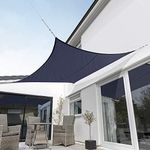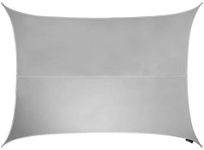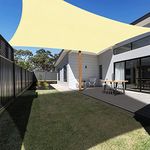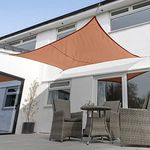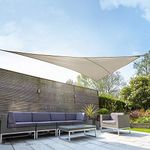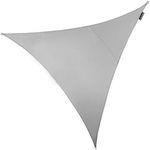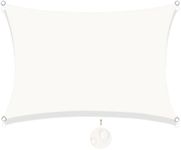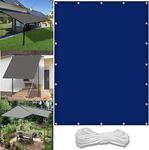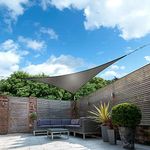Buying Guide for the Best Waterproof Shade Sails
When choosing a waterproof shade sail, it's important to consider the specific needs of your outdoor space. Shade sails are a great way to provide protection from the sun and rain, but selecting the right one involves understanding various specifications that affect their performance and durability. By focusing on key features, you can ensure that the shade sail you choose will meet your requirements and enhance your outdoor living area.MaterialThe material of a shade sail is crucial as it determines the durability, UV protection, and waterproof capabilities. Common materials include polyester, polyethylene, and PVC. Polyester is lightweight and offers good UV protection, polyethylene is known for its strength and durability, and PVC is highly waterproof. If you need a sail primarily for rain protection, opt for PVC. For sun protection, polyester or polyethylene might be more suitable. Consider the climate and typical weather conditions in your area when choosing the material.
UV ProtectionUV protection is a measure of how well the shade sail can block harmful ultraviolet rays from the sun. This is important for protecting your skin and prolonging the life of the sail. UV protection is usually expressed as a percentage, with higher percentages indicating better protection. If you live in a sunny area or plan to spend a lot of time under the sail, look for a product with at least 90% UV protection. For areas with less intense sun, a lower percentage might suffice.
Waterproof RatingThe waterproof rating indicates how well the shade sail can repel water. This is particularly important if you want to use the sail as a rain shelter. Waterproof ratings are often described in terms of water resistance or waterproofness. A fully waterproof sail will prevent water from passing through, while a water-resistant sail may only repel light rain. Consider how much rain your area receives and whether you need full protection or just occasional rain resistance.
Size and ShapeThe size and shape of the shade sail will determine the area it can cover and how it fits into your outdoor space. Common shapes include triangles, rectangles, and squares. Triangular sails are versatile and can be used in combination with others for custom coverage, while rectangular and square sails provide more uniform shade. Measure the area you want to cover and consider any obstacles or structures that might affect installation. Choose a size and shape that provides adequate coverage without overwhelming the space.
Installation and HardwareInstallation and hardware are important for ensuring that your shade sail is securely and safely mounted. Some sails come with all necessary hardware, while others require you to purchase it separately. Consider the type of anchors and tensioning systems needed for your space, such as wall brackets, poles, or trees. Ensure that the installation process is feasible for your location and that you have the necessary tools and skills. A well-installed sail will be more stable and last longer.
Color and AestheticsThe color and aesthetics of a shade sail can affect both its functionality and how it complements your outdoor space. Lighter colors reflect more sunlight and can help keep the area underneath cooler, while darker colors may absorb more heat but offer a more dramatic look. Consider the existing color scheme of your outdoor area and choose a shade sail that enhances the overall aesthetic. Remember that darker colors may fade more quickly in direct sunlight.
